Hydrosphere – Albedo, Fresh Water, Salinity & Temperature
by Devender
0 2130
Hydrosphere – Albedo, Fresh Water, Salinity & Temperature
- Water on Earth:
- 75% of the freshwater is in glaciers and icecaps
- Only 7% freshwater is available as groundwater
- Glaciers have the maximum percentage of freshwater, after that the list goes as
- Albedo:
- The word Albedo is originated from the Latin word Albus that means "white"
- Fresh Snow has the most Albedo, after that the list goes as
- The salinity of the Ocean:
- The average salinity of the ocean is nearly 35 PPT
- The lines joining the places having an equal degree of salinity are known as isohalines
- Rate of evaporation
- Amount of freshwater added by precipitation
- Streams & icebergs
- Degree of water mixing by currents
- The salinity decreases from the tropics both towards poles & Equator
- The salinity increases with depth and after Halocline
- Van Lake, Turkey (330)
- The Dead Sea, Turkey (240)
- The Great Salt Lake, US (220)
- The temperature of the ocean water:
- Thermocline:
- 1st layer is 500 m deep
- 2nd layer is from 500 to 4500 m known as the Thermocline layer
- 3rd layer is till the oceanic floor
- The Arctic and Antarctic circles have only one such layer as the surface temperature itself is 0*C with a very slight change in temperature
- Around 90% of the water is below the Thermocline region
Out of the total surface area of earth, 71% is covered with water and only 29% is land. 97% of the total water present on earth is from Oceans & Sea and only 2.5% is freshwater which we can drink.
Ground water > Ice & Snow > Lakes > soil moisture > atmosphere > Rivers
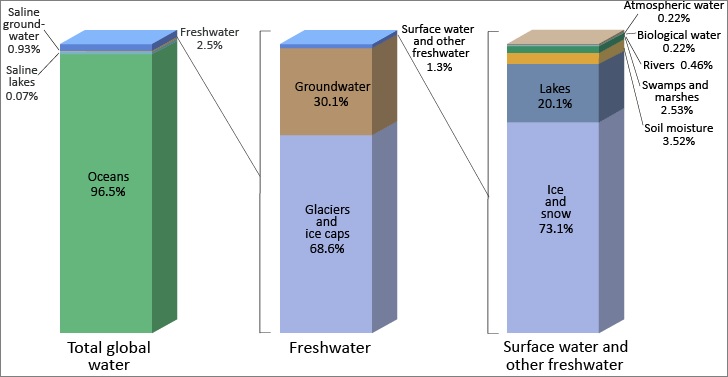
It is the proportion or percentage of solar radiation of all wavelengths reflected by a body or surface to the amount incident upon it.
Ocean Ice > New Concrete > Desert Sand > Green Grass > Bare Soil > Deciduous Trees > Coniferous Trees > Worn Asphalt > Fresh Asphalt
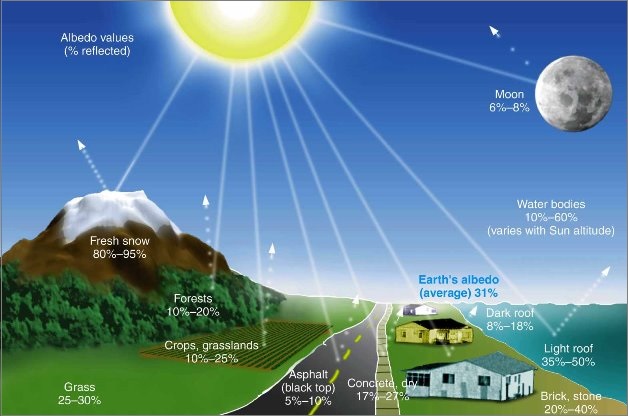
Seawater contains large amounts of dissolved minerals out of which NaCl constitutes the most. It constitutes more than 77%. The other important minerals include magnesium, calcium, potassium, etc.
The ocean water moves freely, so, the proportion of different salts remains constant in all oceans even to the great depths but the concentration of salt varies in different areas which is measured in Salinity.
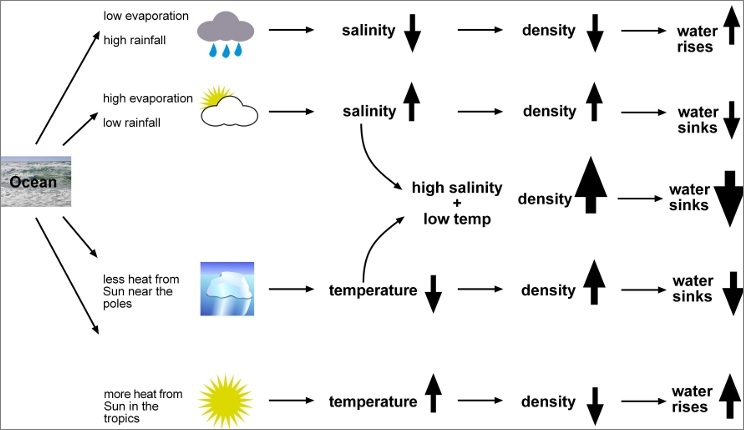
The degree of salinity in oceans and seas is affected by:
The average salinity of the seawater is 35 gm in 1 kg of water and the order of the salts in it is as Nacl > Mgcl2 > MgSO4 > CaSO4 > CaCO3 > MgBr2. The highest salinity is found at the Tropic of cancer & Tropic of Capricorn basically because of the active evaporation.
The top three saline water bodies of the world are:
Just like the landmasses, the temperature of the ocean water also varies at different places and at different depths. The water tends to cool down and warm up more slowly as compared to the land, so, the annual range of the temperature in any part of the ocean is very smaller.
It is a boundary region in the ocean from where a gradual decrease in temperature begins. There are 3 layers in an Ocean:
The mean annual temperature of oceans decreases from equatorial areas towards the poles, but the reduction of temperature with latitude is never constant, because of the interference by warm & cold currents, winds, and air masses.

Share:

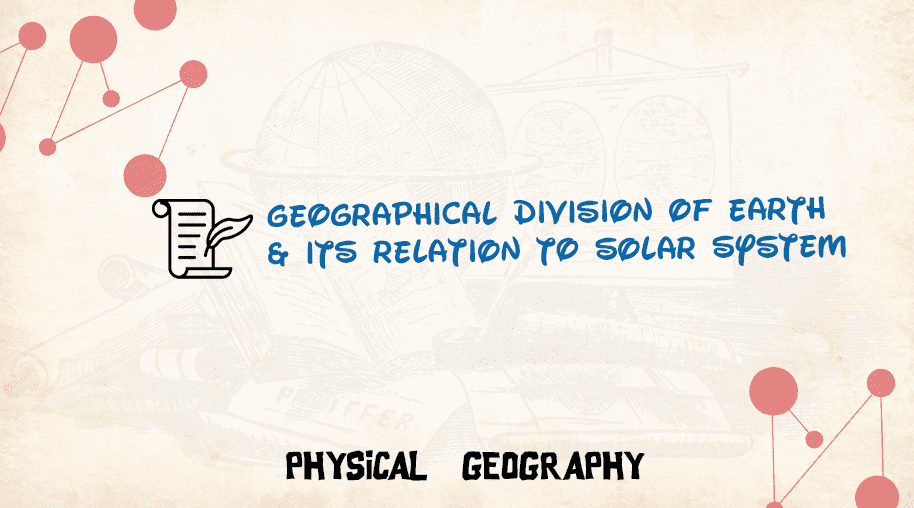
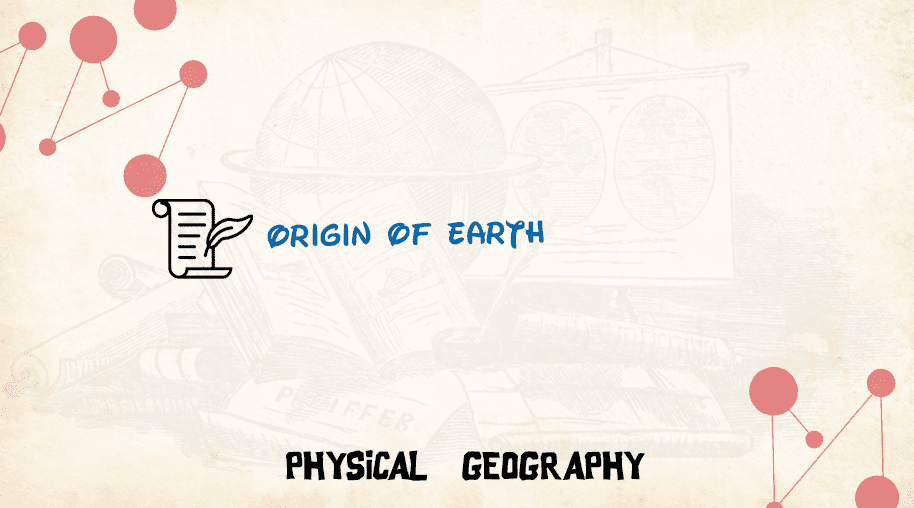
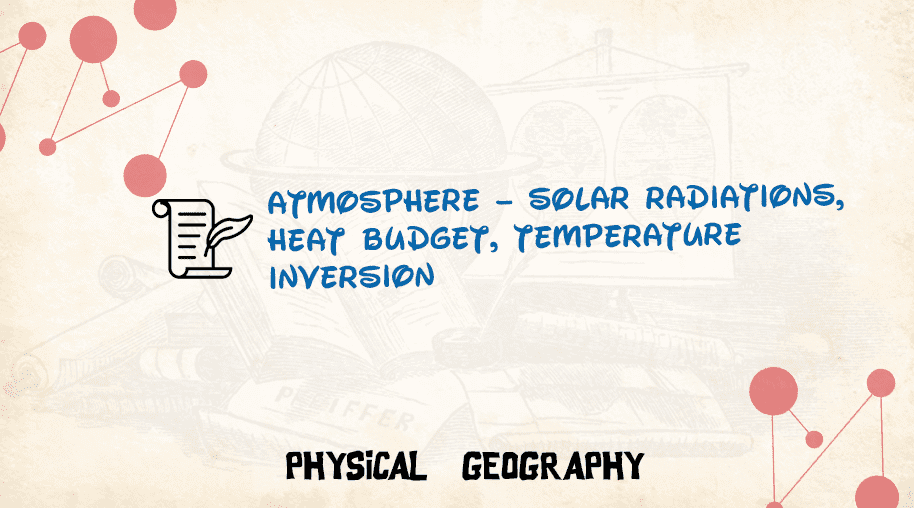
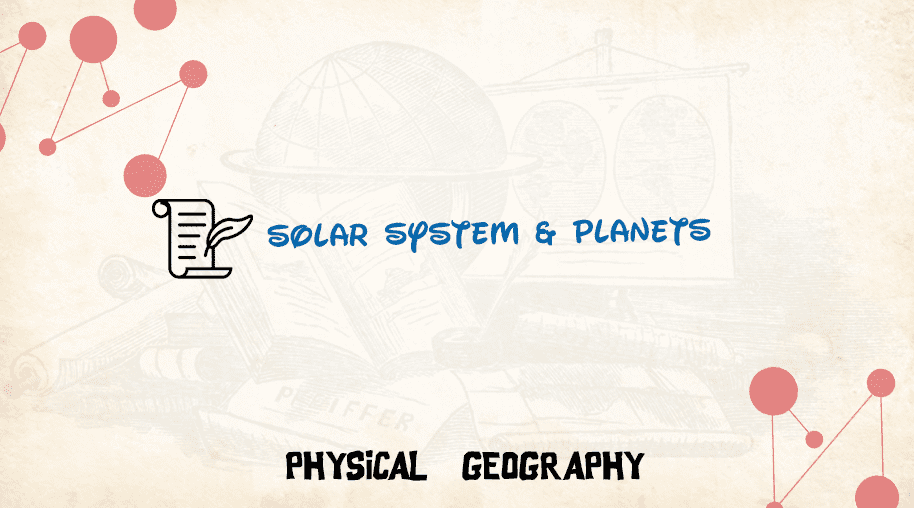


Comments
Waiting for your comments